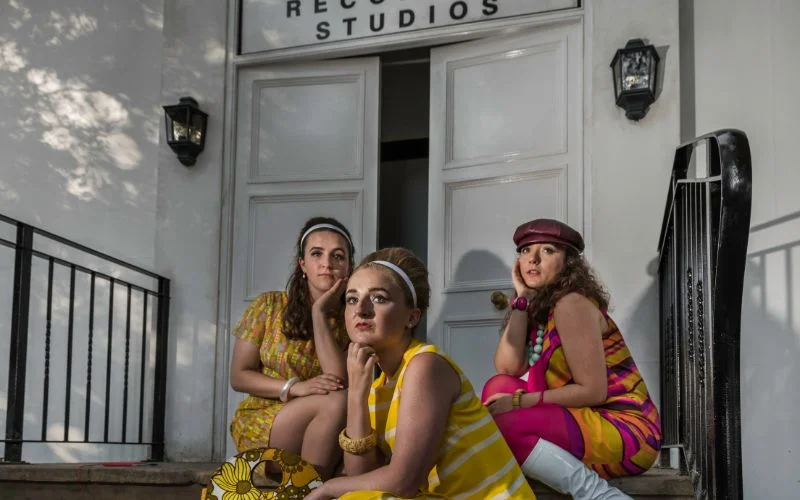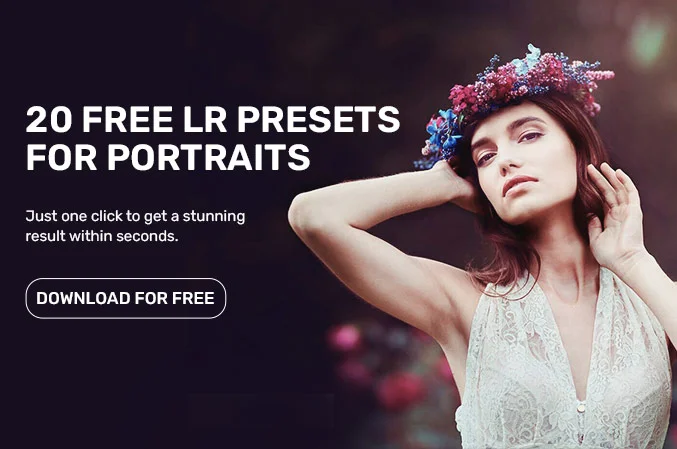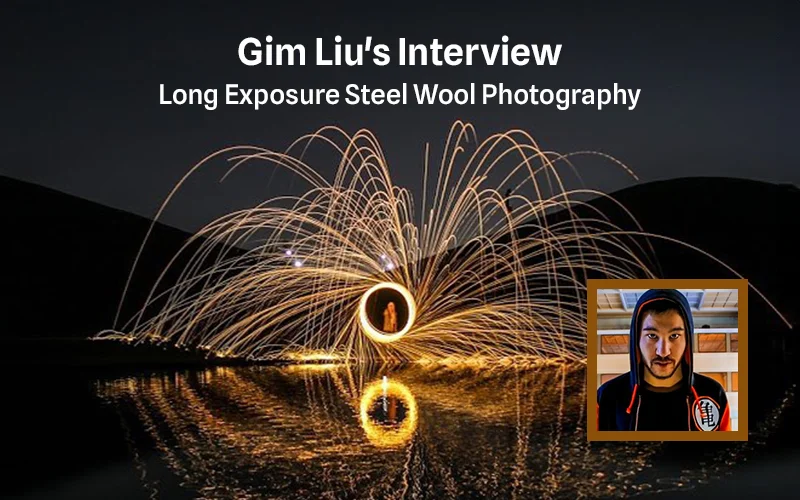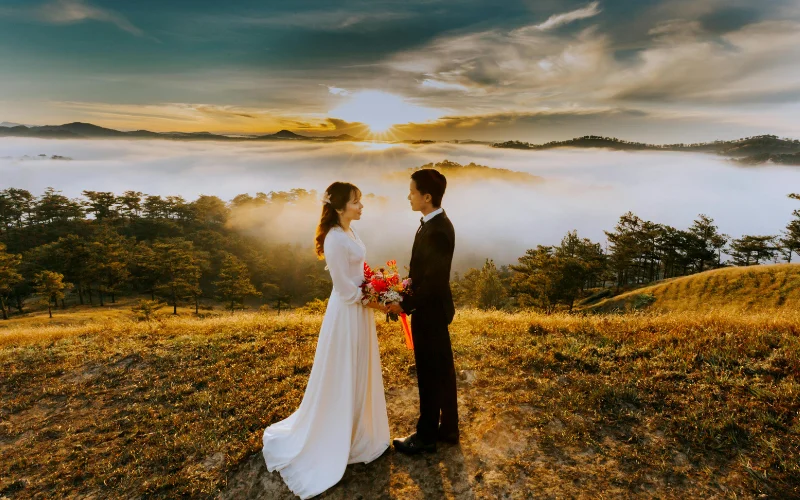Russell Cobb is an exceptional fashion photographer and artist whose passion for capturing captivating moments is evident in his work.
Having studied photography and illustration at the prestigious Central Saint Martins School of Art in London, Russell’s expertise in both disciplines has greatly influenced his artistic vision.
Also, With a background as an event photographer, he has seamlessly transitioned into portrait photographer, fashion photographer, and other brands that embrace vintage and retro aesthetics.
Additionally, his photography revolves around the art of storytelling, with a particular focus on actors and re-enactors who possess an unwavering obsession with history.
Russell’s lens also captures the essence of time travelers and British sub-cultures, skillfully playing with the concepts of obsession and escapism.
Q1. How did you first get started in photography, and what inspired you to pursue it as a career?
Ans. I was around 12 years old when I was given an Olympus Trip camera.
I immediately realized the camera was a device for capturing memories and a way of documenting my life.
This notion drives me today, I’m always inspired by documenting the world around me and a curiosity about the people I meet.
I’ve always found the immediacy of photography quite magical. By coincidence, the camera was released in the year I was born and I still have an Olympus rangefinder in my studio.
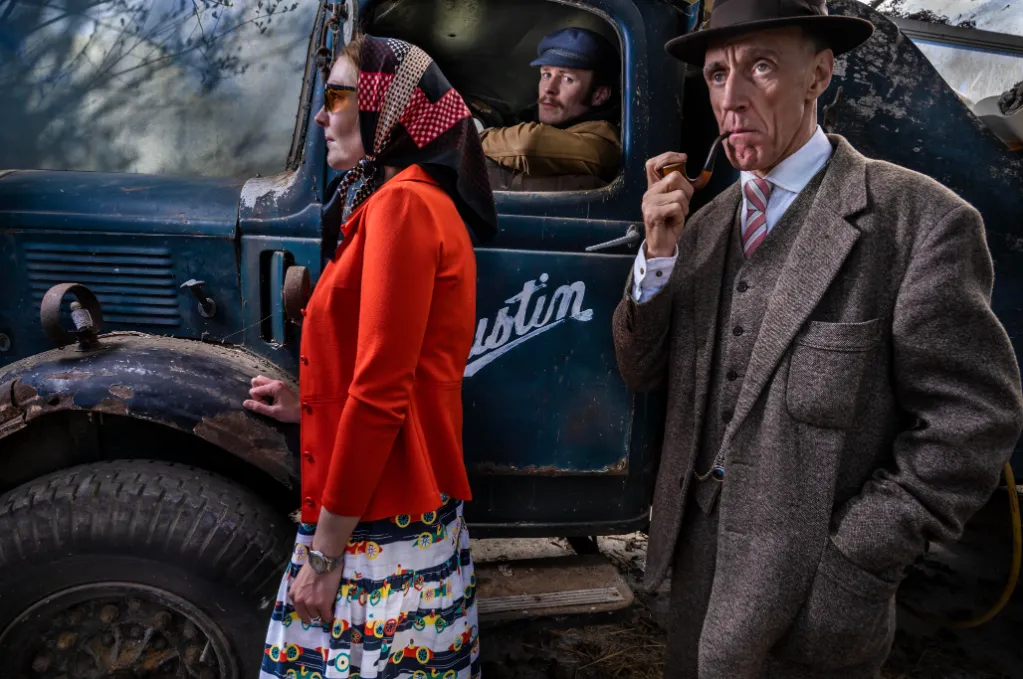
Q2. Can you describe your photography style and the types of subjects or themes that you are most passionate about capturing?
Ans. I always feel that my photography style is something that just naturally unwrapped, in the same way one’s handwriting evolves. Using off-camera lighting has definitely given my work its distinctive look.
I’m also inspired by cinematography and fashion photographer, so elements of these are added to the mix.
I’ve been most passionate about photographing people, particularly actors and reenactors.
Essentially I’m documenting people from all walks of life who transform themselves into alternate personas or historical characters from another place.
My whole body of work is underpinned by the belief there’s an actor in everyone, an intrinsic human thing of transformation.
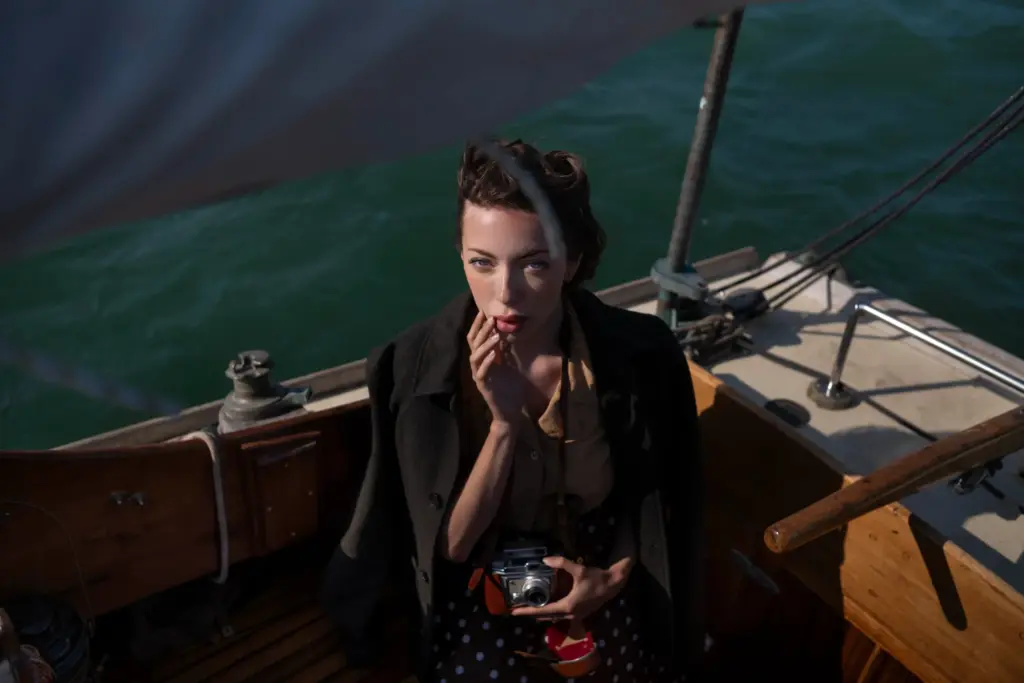
Q3. Your work focuses on portrait photographer and storytelling, particularly on actors and re-enactors obsessed with history. Can you elaborate on what draws you to this subject matter and the stories you aim to tell through your photography?
Ans. The focus on creating unique portraiture and storytelling lies in my own long term fascination and passion for history. I’ve always loved museums, historical books and films.
Discovering re-enactment events 14 years ago was a revelation. I immediately felt like I was time traveling or immersed in historical films.
The first time I was at a WW2 reenactment event, I remember the shock of feeling I was in a war film or perhaps in a real moment in history.
So I guess I’m taking people on a time travel journey, asking them to look at this unusual world or re-creation taking place.
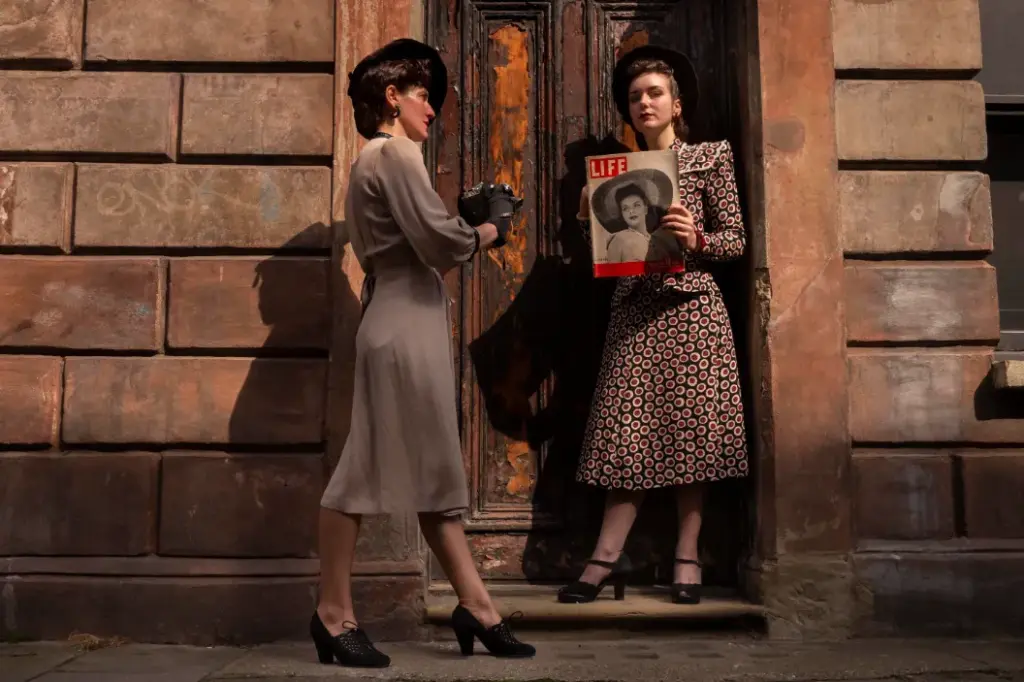
Q4. Your background includes studying photography and illustration at Central Saint Martins School of Art in London. How have these two disciplines, photography, and illustration, influenced and complemented each other in your work as an artist and photographer?
Ans. At art school the departments overlapped, we were always taught that a brush, a pen and a camera were just tools for relaying one’s personal vision.
Imagination and ideas have always been my key driver. Working as an illustrator you are always in a world lost in your imagination, observing, brainstorming, developing ideas and drawing in a sketchbook.
I use these skills in photography, always planning, drawing, and thinking about what I’m going to do.
A lifetime of drawing and painting has assisted my understanding of light and composition, they are elements that come naturally to me.
My illustration work won many awards, amongst others 5 Best of British Gold. In 2007, I was named by the Independent Newspaper as one of the top 10 illustrators working in the United Kingdom.
However, the pull to photography was always calling me and, in 2008 I started the transition by working on my first long term project.
Painting and illustration are more like a form of ‘slow cooking’, that often frustrated me in the long hours and late nights in my studio.
However, I now always draw upon this grounding and I now love the immediacy of the camera.
Create eye-catching illusions with AI easily, Learn Now
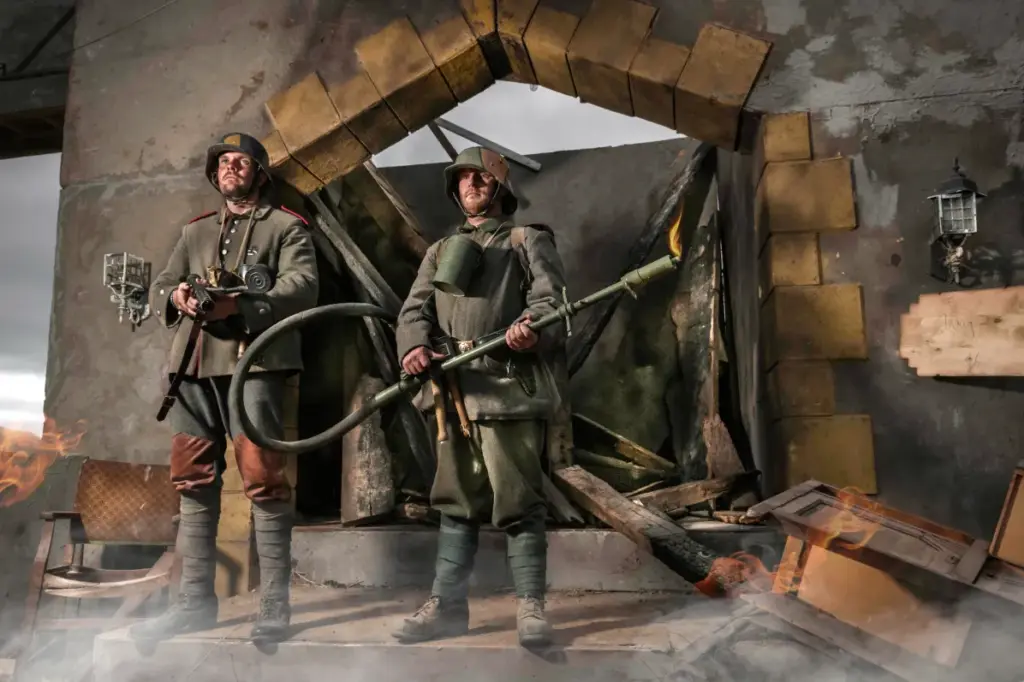
Q5. Photography often involves working with people, whether it’s portrait photography sessions or event coverage. How do you establish rapport with your subjects and create a comfortable atmosphere for photography sessions?
Ans. I have always been in the understanding I’m playing the long game. Perhaps I’m a creature of habit, therefore I often return to the same event or person time and time again.
Military Odyssey is one of my favorite reenactment shows in the UK, I’ve attended it 13 times. Over time you get to know people, make friends, gain access and win their trust.
Just talking, listening and being interested in their world and what they are trying to say makes a big difference.
Quite often at an event I’ll spend the re-enactors ‘setting up day’ walking around looking for great faces and planning shoots in my head.
I’ll always break the ice by saying hello and chat to people, therefore preparing the ground for the following days.
I’ve spent many a night making lists, notes and ideas in a tent under torch light. After that there’s no planning, I work the moment keeping the door open to unexpected ideas and scenarios.
Over planning is dangerous, I like to leave lots of room for the planned and unexpected.
I realized reenactment displays are immersive experiences like film sets. To blend in with the WW2 I started wearing basic kit therefore not to visually disrupt the display.
This seemed to buy me an added amount of respect and opened more doors to this inner world.
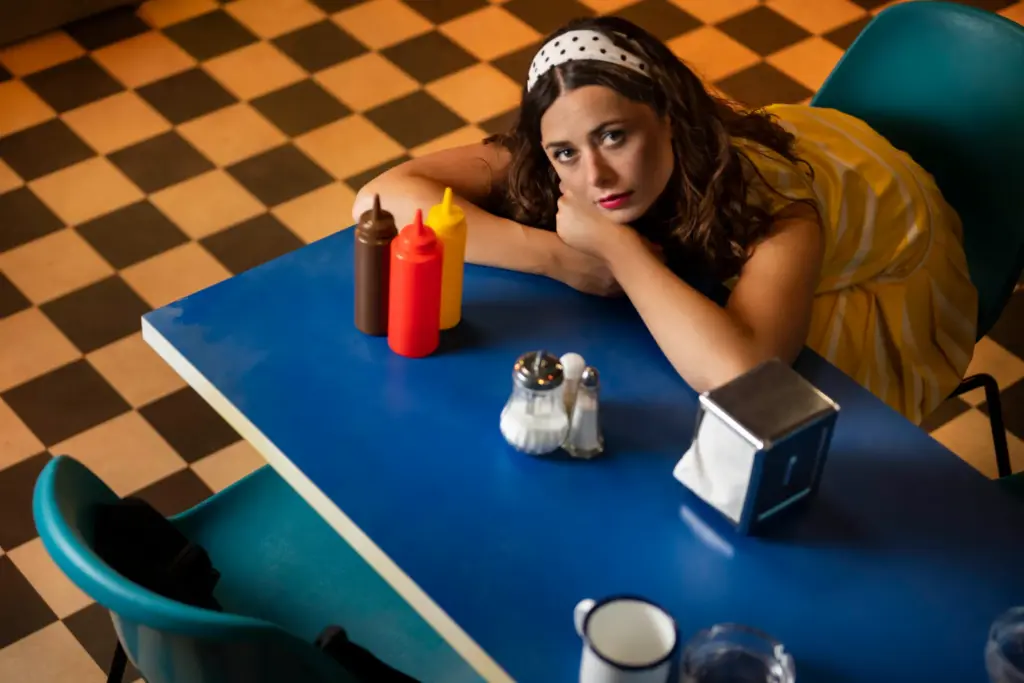
Q6. How do you approach photographing people from diverse backgrounds who transform themselves into alternative personas, and what do you aim to convey through these portrait photography?
Ans. I aim to convey a cinematic moment frozen in time, a simple moment that has a timeless element to it. In my early days I could only see a uniform and a gun.
After a while I realized there were deeper elements of escapism and eccentricity. Eventually, it became much broader where I realized I was documenting a British subculture, so conceptually I started looking at things on different levels.
People often suggest I should photograph Vikings buying ice creams and standing outside portaloos.
This would make a great photo story, but at the time it wasn’t the journey we were mutually on.
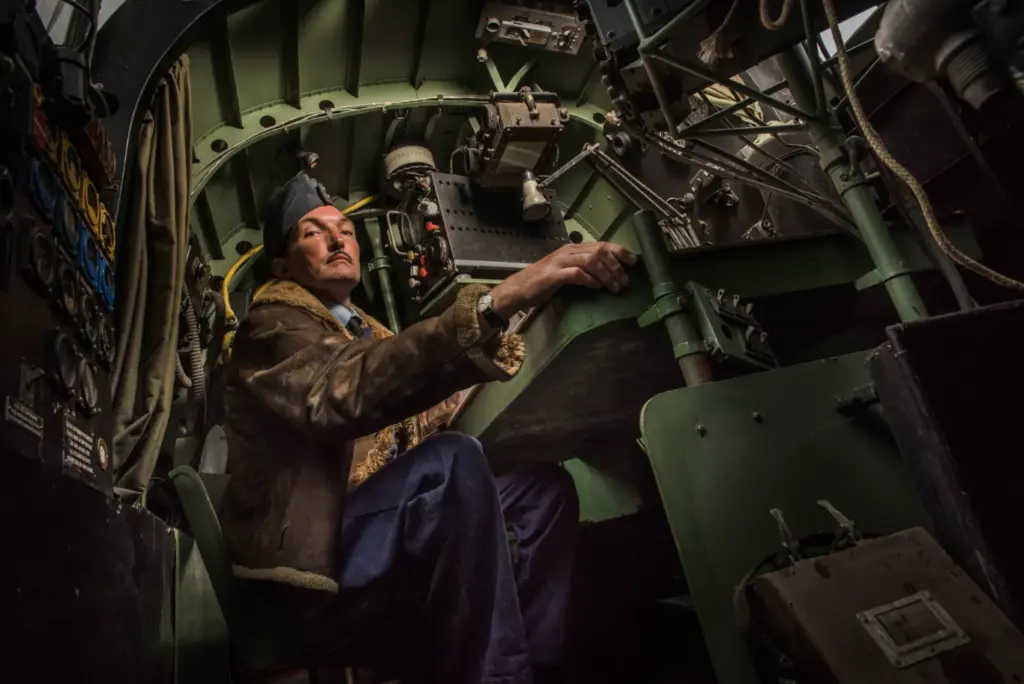
Q7. Can you discuss the role of nostalgia and escapism in your photography? How do these concepts play into your creative process and the stories you choose to tell through your images?
Ans. Nostalgia and escapism play a huge role in my work. It’s a childhood thing that permeated into my years as an artist, where I was essentially lost in a world of imagination.
So the process continues, my photography is always a collaboration and a creative exchange of ideas.
I’ve come to realize there’s always a notion of play and imagination that is the main driver. It’s an immersive experience, somewhat of an escapism from the real day to day world for both parties.
During the photoshoot, I never have the luxury of lots of time and I’m always having to think quickly on my feet working the moment.
Quite often a prop like an old camera can spark an idea or a playful scenario, perhaps being a war photographer or we’ll invent a story of espionage.
Sometimes it could be a simple human emotion of fear or a simple moment being lost in one’s own thoughts.
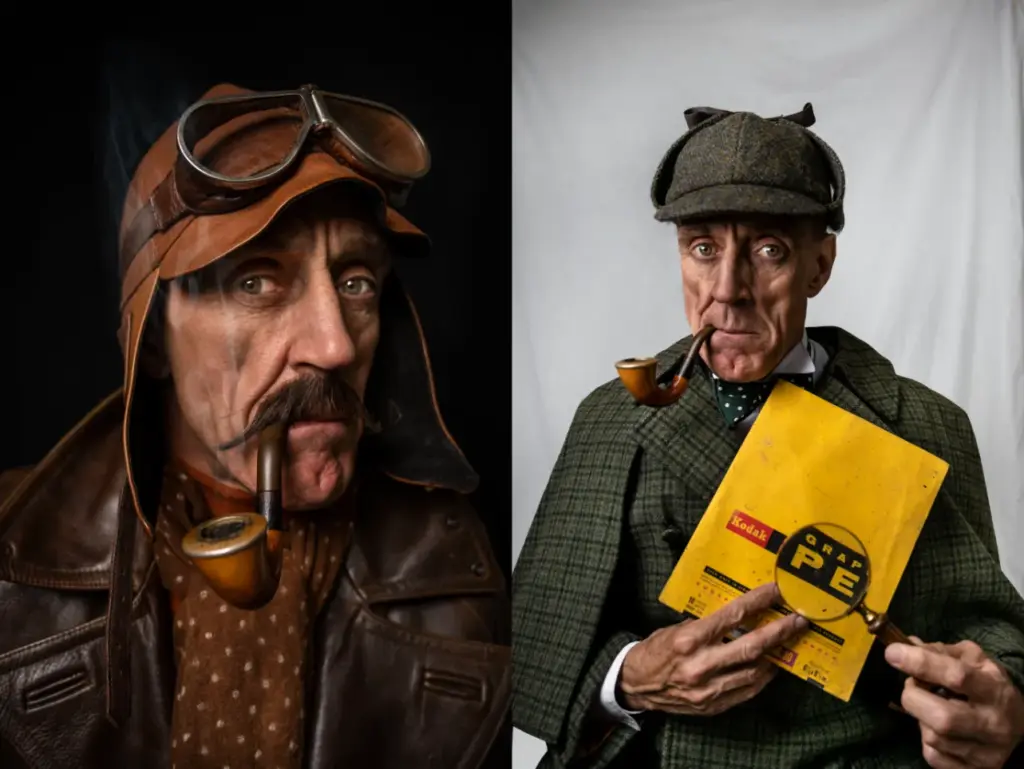
Q8. What camera equipment and editing tools do you rely on to create your signature shots?
Ans. I now use a Leica SL2s and a Leica M10 with Leica lenses. I love the look, feel and simplicity of these cameras.
Also, I work to the basic old triangle of ISO, aperture, and shutter speed that came from a Leica film background.
I switched to other brands when digital started to take over in 2010. I personally felt these cameras became too complicated with a myriad of features I never used, so returned to Leica after 10 years.
To create my signature style, I often use off-camera lighting. I use a Profoto A2 with a wireless trigger.
Playing with flash and ambient light quite simply gives my work a pop and that cinematic look I search for.
Essentially I’m often working with an assistant and it’s bringing a studio set up to any location. Again simplicity is key, I always use just a one light setup in order to keep things spontaneous.
For editing I mainly use Adobe lightroom, I hardly ever touch Photoshop now.
In Lightroom I make global adjustments then finer edits with the brush tool, essentially dodge and burn as one would in the dark room or in the way one makes a drawing.
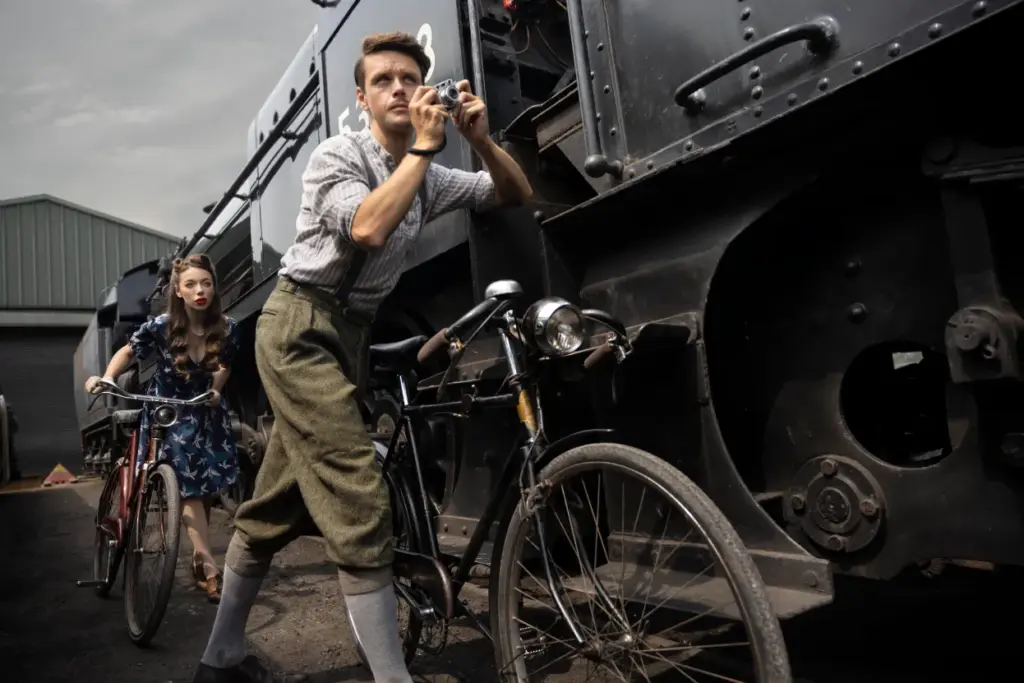
Q9. Could you share some of your favorite photography projects or assignments you’ve worked on throughout your career?
Ans. I think my 7 year photo essay documenting WW2 reenactors was a favorite and a huge turning point. It was the first project that I was really able to get my teeth into and I learnt so much.
I enjoyed embedding myself into different re-enactment groups, wearing uniforms, getting dirty and by default becoming their historical war photographer, it became something akin to method acting.
I love what photography can bring to your life, the unexpected , ‘ how did I end up here ?’ moment. Such as being in a German armored car in a battle, or ducking under Spitfire wings taxiing on the runway.
The project ended up in a large exhibition in Margate Uk called Axis and Allies. The exhibition was generally about WW2 reenactment in the UK.
It wasn’t about depicting the real war, but a documentation of the war depicted in popular culture, to a generation who had grown up on a diet of Hollywood films, children’s books, comics and toys.
The show consisted of 100 photographs of WW2 frozen cinematic moments packed with nostalgia and heroism.
Guide to find the right camera for your amazing projects, Download for free
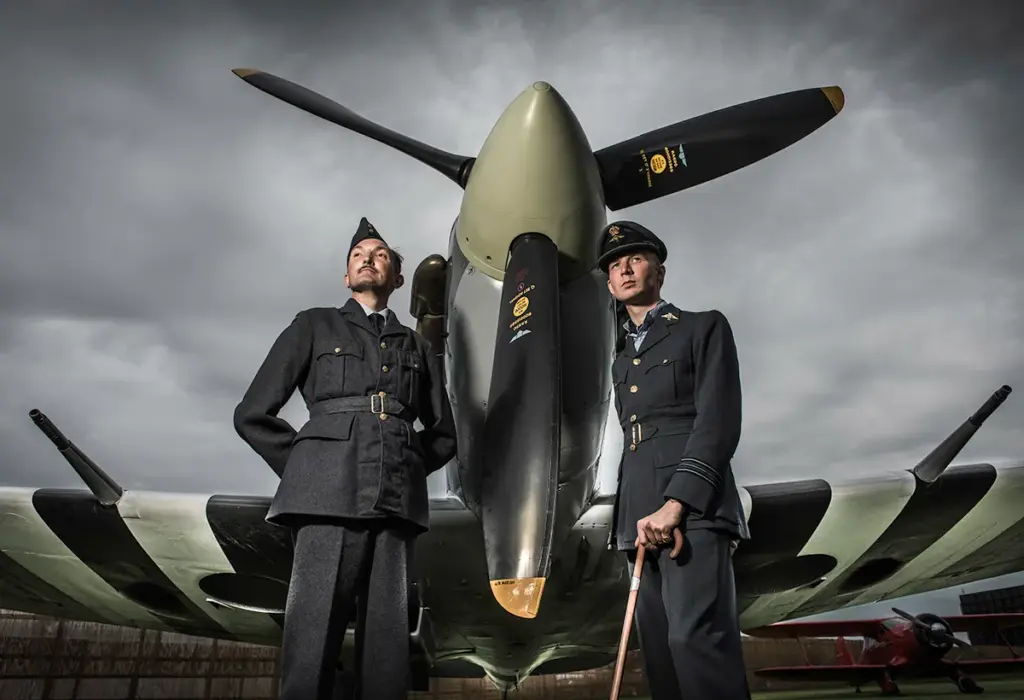
Q10. You mentioned transitioning from event photographer to portrait photographer, fashion photographer, and other areas connected to vintage and retro aesthetics. What drew you to this shift, and how has it impacted your artistic approach?
Ans. I’m always looking to organically spread outwards. Things can easily become repetitive and stale, therefore I think you need to keep looking and probing new areas.
I’ve realized that beyond the actors and reenactors there’s a whole world out there of people escaping modern life and living in a nostalgic past.
Subsequently, there are more doors to open and endless companies feeding this world. Finding the right location portrait photography is my favorite; marrying subject and location is always a fun creative thing to do.
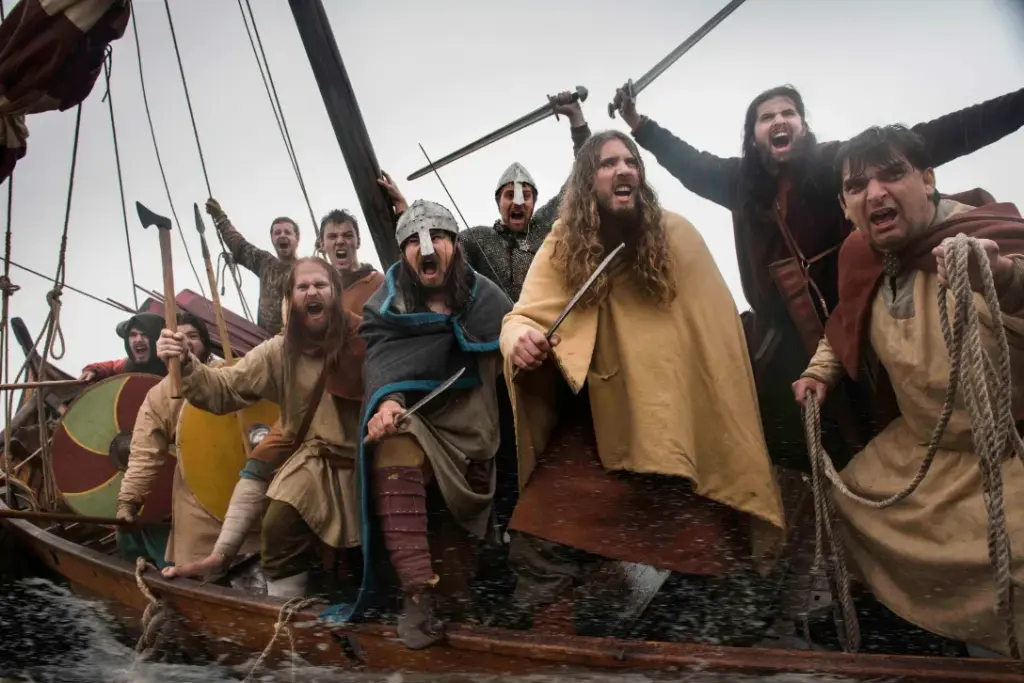
Q11. What is the most challenging aspect of being a professional photographer, and how do you overcome those challenges?
Ans. I think opening doors and access is one of the most challenging aspects. The business side of things and aspects of social media can be hugely time-consuming.
I definitely fall into the category of someone who loves the creative part, hates the business part. Trying to put a photography shoot together can be challenging, it’s like searching for all the pieces of a huge jigsaw puzzle.
I always try to maintain my self initiated work and projects, this keeps things fresh and relevant. In my art school days at St. Martins we always worked to the mantra, don’t slip into the marketplace , create your own market.
Therefore the main aim is to try and keep things rolling forwards.
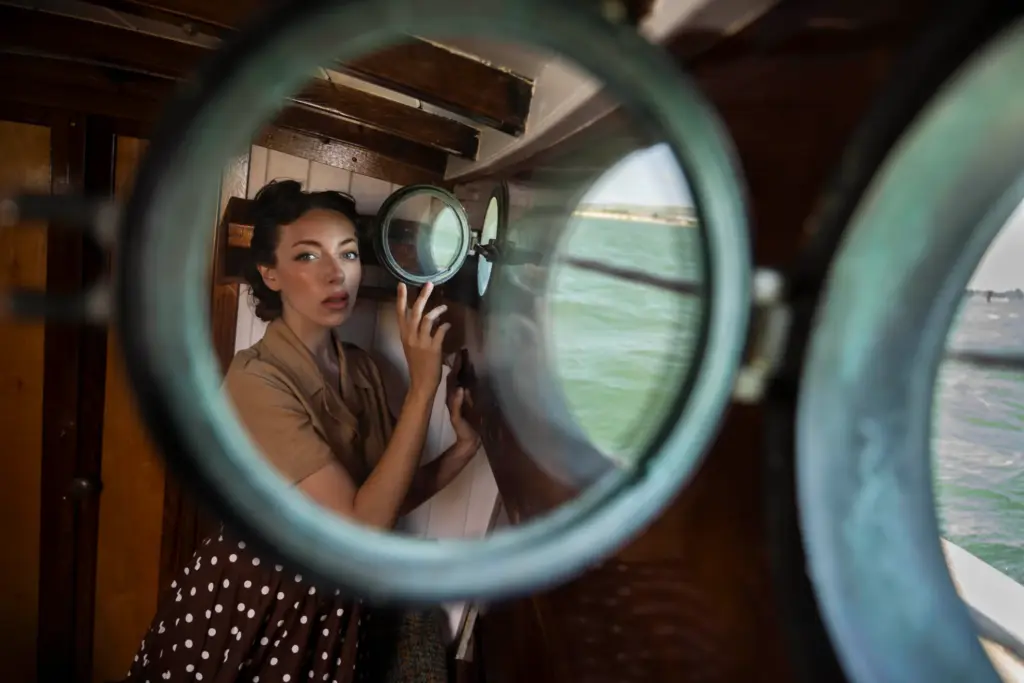
Q12.Besides Photography, What is something you love doing in your leisure time?
Ans. I still keep up the daily habit of going to a coffee shop each morning where I observe, draw and immerse myself in my sketchbook.
I’m always making notes and making plans. I’m lucky to live in the South Downs in the UK. So escaping on my road bike is a favorite pastime.
Also, work and life all seem to blend into one. I’m happy that creativity is an immersive lifestyle thing.
I never switch off, my sons know that moment when on holiday or when I stop the car. I get that look in my eye and happily vanish for an hour.
Interested in lifestyle photography but very new to it? See what a professional lifestyle photographer has to say in his interview. Read now
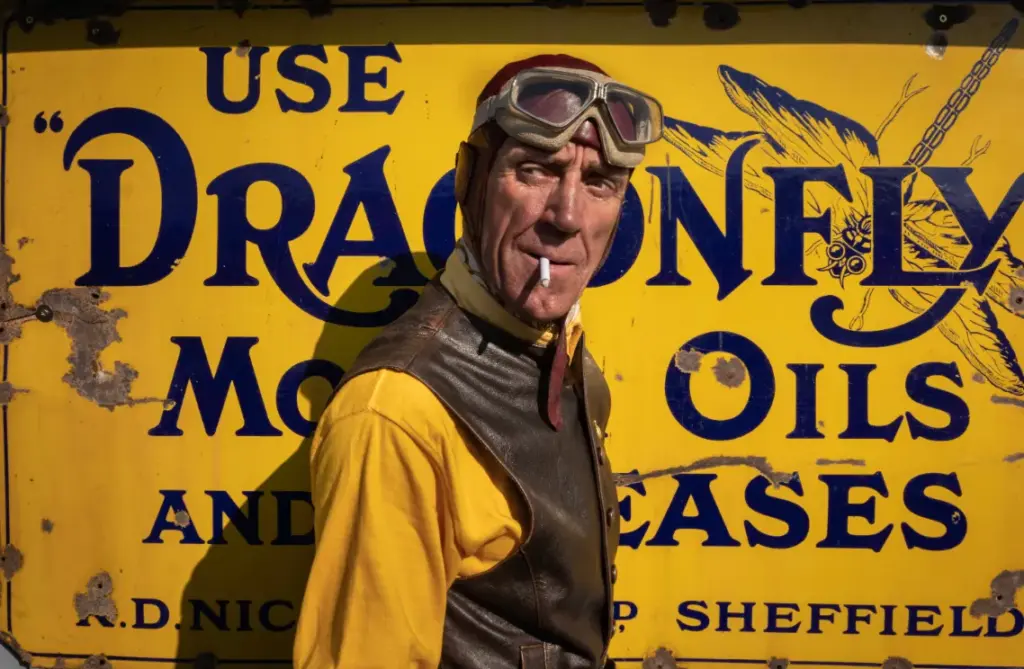
Q13. Could you tell us about any upcoming projects or exhibitions you have planned? What themes or subjects you are excited to explore in your future work?
I think my current project for Goodwood Revival is ever present in my thoughts now, its spun off the WW2 project.
This will culminate in an exhibition at Goodwood next year and the plan is to produce a book.
As mentioned I’m currently spending my coffee mornings making endless notes on what my next project should be, perhaps something that continues on the theme of dressing up and escapism.
I always love it when someone contacts me and takes me on that unexpected journey, a new challenge where I find myself in an unexpected place.
More fashion is a goal too, and something that involves travel too.
Create amazing fashion photographs with the help of AI with this interesting course: Creating Fashion Photographs With AI
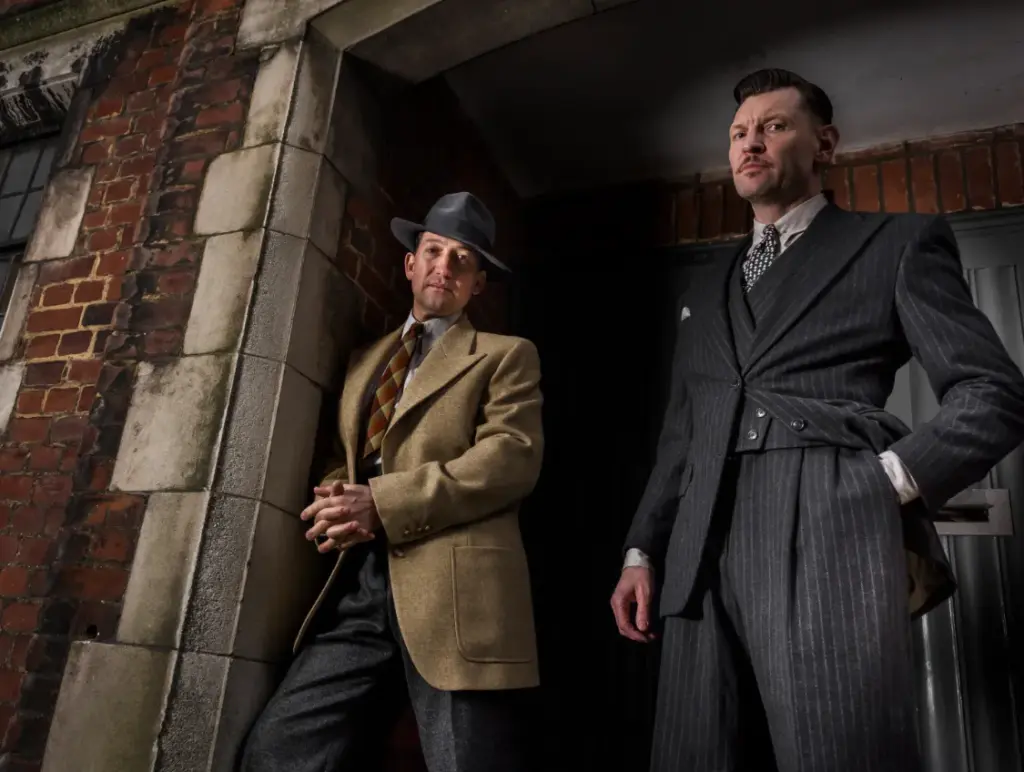
Q14. What advice do you have for aspiring fashion photographer who are looking to make a career out of their passion for photography?
Ans. I think the word passion is so important, following your own obsessions and personal interests is key.
So essentially believe in your personal vision and draw on your own life experience, everyone has a unique story to tell. Understand your strengths and weaknesses.
I learned I’m a night owl and not a well-versed landscape photographer (I hate getting up at sunrise). War photography was my early obsession, but I learnt it’s not in my makeup, so I found another safer way via re-enactment, somehow, I did it.
I’m not totally comfortable as a street photographer, the hunting smash-and-grab element. I guess I’ll admit to having the sensitive artist gene that avoids confrontation.
It’s disappointing when photographers contact me and their only question is what kit do you use? As I’ve discussed here, its always the broader picture.
Whatever you use, technically learn your equipment inside out so you’re not fighting the camera and you can concentrate on the subject.
Finally, be obsessive and be prepared to play the longer game, lots of small steps rather than one huge one. Don’t be too linear; embrace the unexpected.
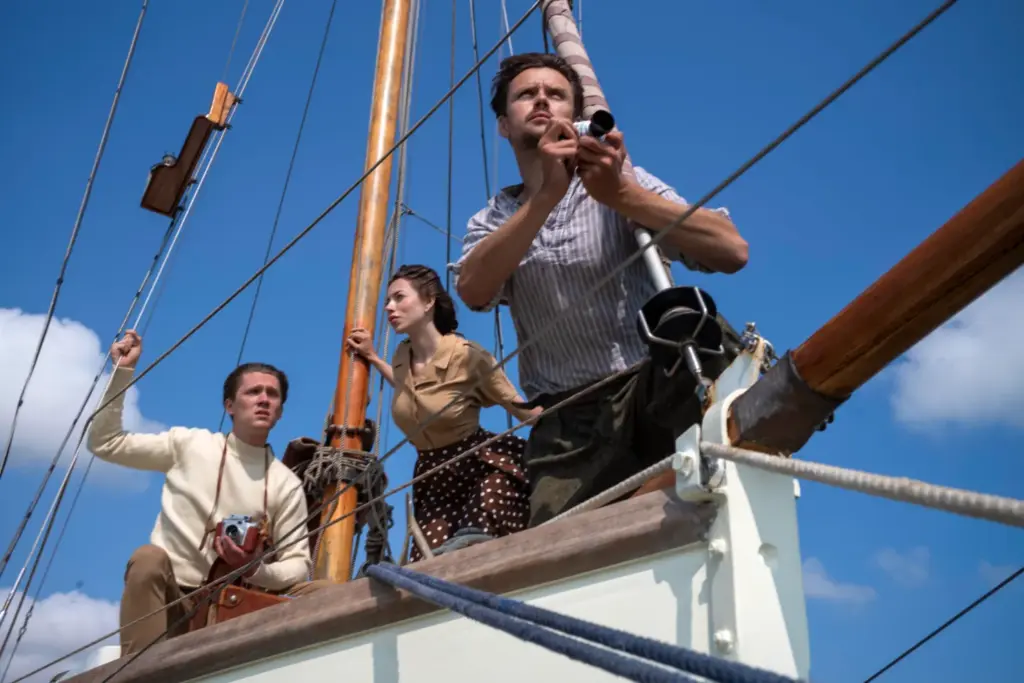
Conclusion
In conclusion, Russell is an exceptional fashion photographer and artist whose passion for capturing beautiful moments is evident in his work.
Also, his photography revolves around the art of storytelling, with a focus on actors who are obsessed with history.
Russell’s lens also captures the essence of time travelers and British sub-cultures. Skillfully playing with the concepts of obsession and escapism.
Also, through his unique style, he continues to create stunning images that transport viewers to different eras.
To check out more of Russell’s work click here
